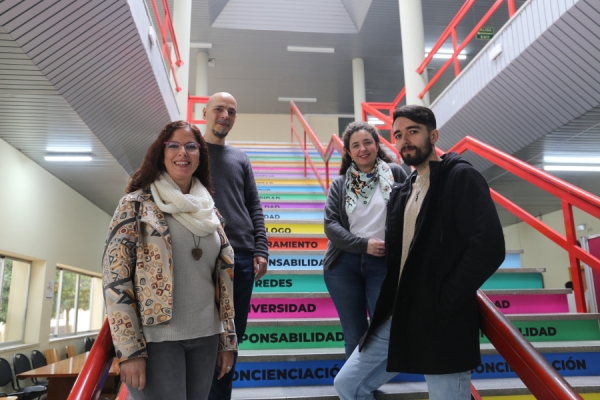Bisexuality is a more prevalent sexual orientation than homosexuality, despite being much less visible. In fact, studies show that rates of distress, depression, and anxiety among bisexual people are higher than among homosexuals. Denial, invisibility and a lack of community support impact these individuals' mental health.
This orientation has also received less attention by academia. There are few tools to assess discrimination against bisexual people based on their sexual orientation, and in the Spanish context they are even more limited. Thus, a team from the Department of Psychology at the University of Cordoba has translated into Spanish and validated a scale used in the Anglo-Saxon world to evaluate negative attitudes towards bisexuality: The Gender-Specific Binegativity Scale (Yost & Thomas, 2012).
With the validation work of the team formed by researchers Rosario Castillo, Carmen Tabernero, Sandra Santiago, Laura Onieva and Bárbara Luque, and researchers Sebastián Vivas and Francisco García, this instrument can be used in the Spanish context. In addition, "an added benefit of this scale is that it allows attitudes towards bisexual women and bisexual men to be measured separately, making it a very valuable measuring instrument because it allows the gender perspective to be taken into account," explained Rosario Castillo, the work's main author.
The scale is comprised of 30 items to evaluate women and 30 to evaluate men, with statements such as: "I don't think that bisexual women (or men) should work with children", "I don't think that bisexual women (or men) should marry" or "I avoid bisexual women (men)".
To overcome the drawback of the instrument's length, which entails having to complete 30 items referring to bisexual women and 30 to bisexual men, the team validated a shorter version with only 8 parallel items for each gender.
Results of the validation
495 students in the School of Education Sciences and Psychology participated in the development of this scale, completing it along with other variables of interest, such as sexism and social dominance. "We chose this sample because they are young people who, in the future, will be professionals working with people of different ages and having the responsibility to treat everyone equally," said the researcher. The results confirmed the validity of the instrument and, in addition, allow for a deeper look at bisexuality.
The rejection of bisexual people was very limited, but negative attitudes were related to sexism, homophobia and an orientation towards social dominance, which is a variable that evaluates discrimination, in general, and support for social hierarchies. That is, those who had negative attitudes towards bisexual people were also more sexist and showed greater attachments to hierarchy.
"Based on the results, bisexual men are more frowned upon than bisexual women. Bisexual men, in addition, are more scorned by men themselves," explained researcher Sebastián Vivas. This has a lot to do with gender stereotypes since, although there are negative attitudes towards both bisexual women and men, in the case of women they are more related to promiscuity and eroticization on the part of men, and "they are seen as a confused heterosexual woman, while in the case of men, they are made invisible and pointed to as confused homosexuals."
This work bolsters the visibility of bisexuality, providing an instrument that paves the way for further research into attitudes towards bisexual people on a larger scale, developing strategies to promote equal treatment, such as training in equality for people who work in public service, or education, at every level, and then being able to evaluate the effects of these programs; in short, moving towards a better and more egalitarian society.
References
Castillo-Mayén, Rosario & Vivas, Sebastián &Garcia-Torres, Francisco & Tabernero, Carmen & Santiago-Sillero, Sandra &Onieva-Castón, Laura & Luque, Bárbara. (2024). The Gender-Specific Binegativity Scale: Validation in a Spanish Sample of University Students and Proposal of a Brief Version. Sexuality Research and Social Policy, 1(21). 279-296. DOI: 10.1007/s13178-023-00912-1
Yost, M. R., & Thomas, G. D. (2012). Gender and binegativity: Men's and women's attitudes towards male and female bisexuals. Archives of Sexual Behavior, 41(3), 691–702. https://doi.org/10.1007/s10508-011-9767-8


